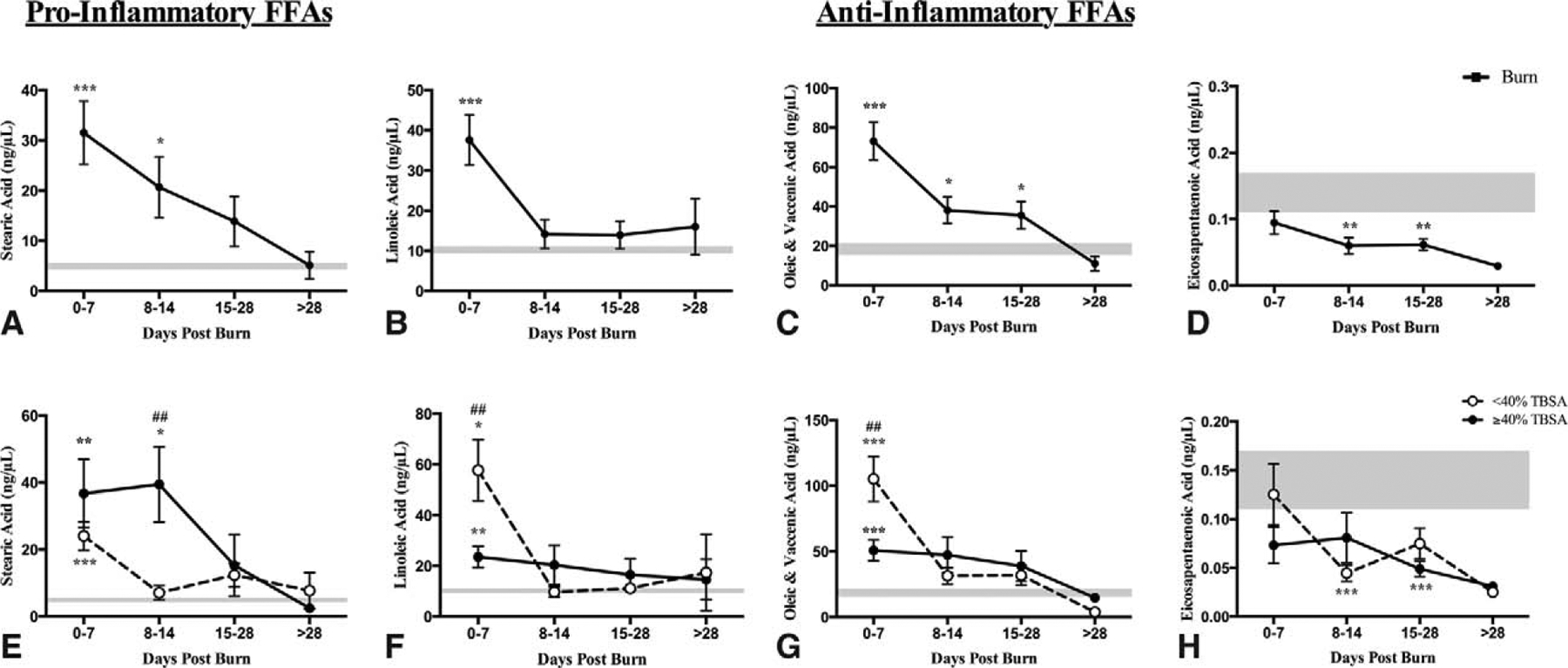FIGURE 3.

Lipid FFA alterations in burn patients over time. Pro-inflammatory FFA species (stearic and linoleic acids) were all significantly increased within the first 14 days after injury relative to controls (A, B). Anti-inflammatory oleic and vaccenic acid and eicosapentaenoic acid also showed augmented profiles throughout sampling period (C, D). When stratified based on burn size (<40% TBSA vs ≥40% TBSA), both groups had similar profiles with steric acid revealing the most divergent trajectory in the severe groups (E to H). Data expressed as mean ± SEM.*, ** & *** = significant difference between burn (n = 46) and healthy controls (n=5); #, ## & ### = significant difference between < 40% TBSA and ≥40% TBSA burn groups; P < 0.05, P < 0.01, and P < 0.001, respectively.
